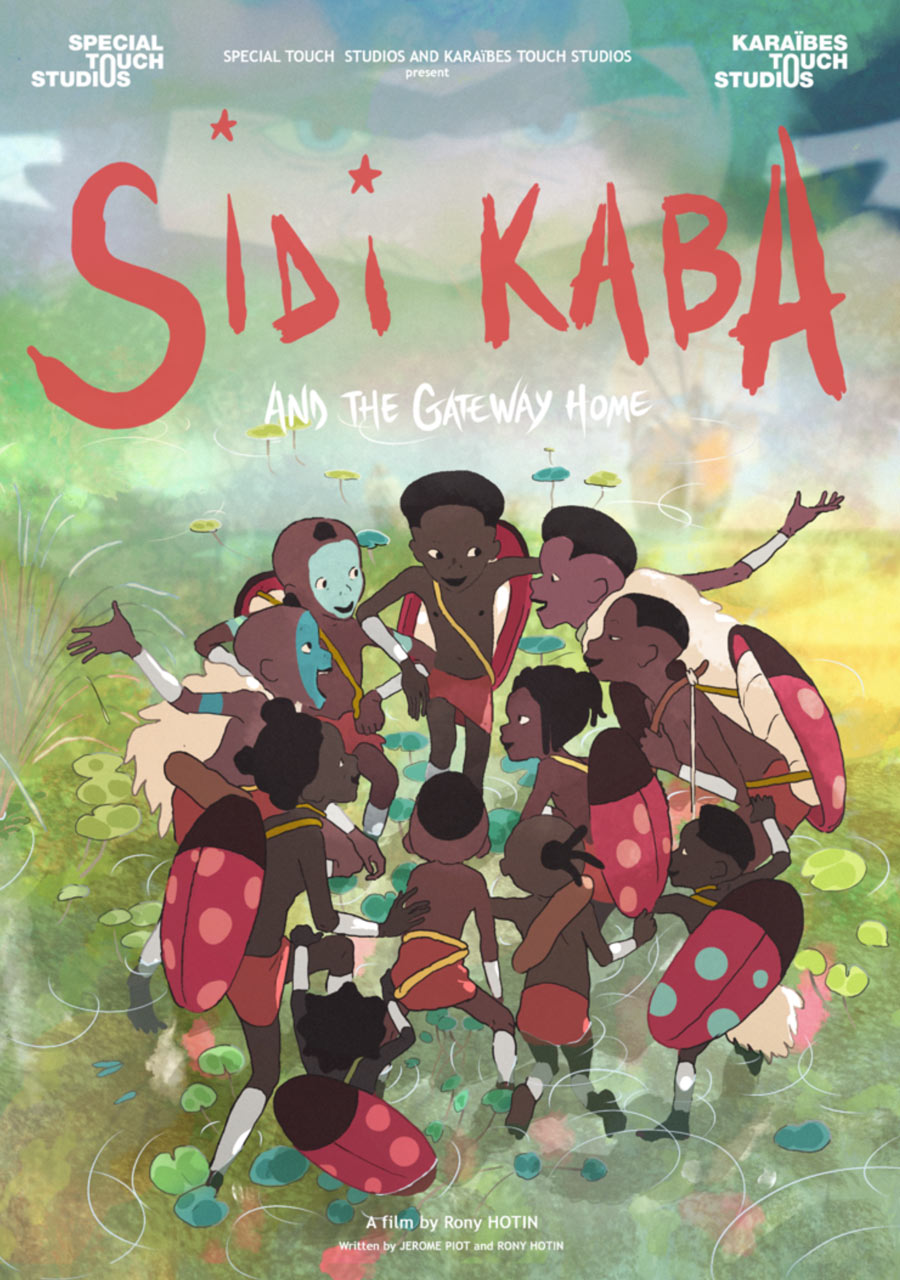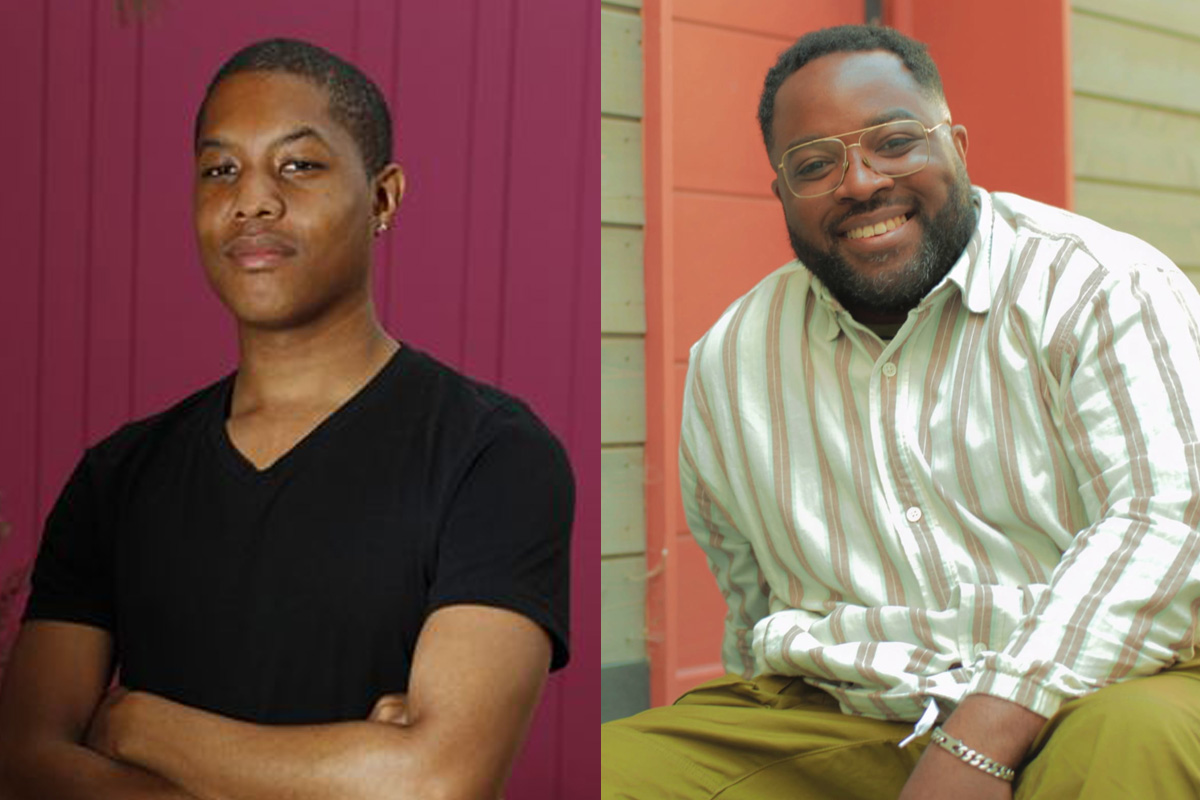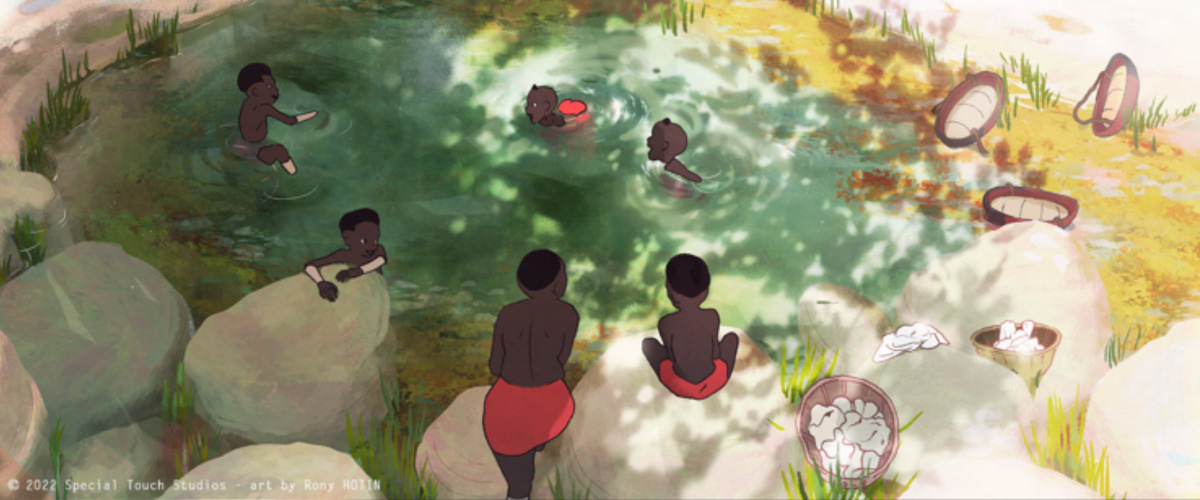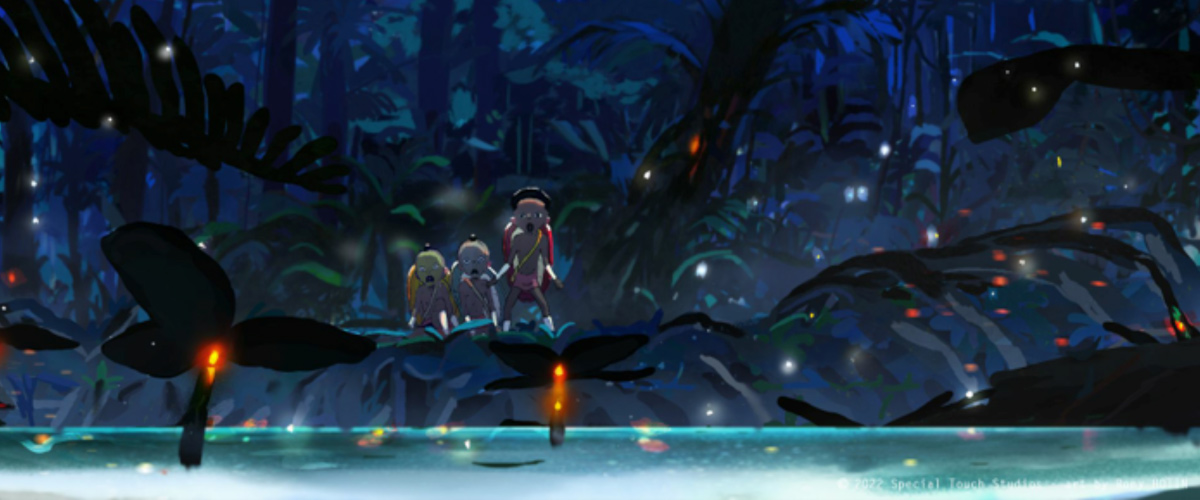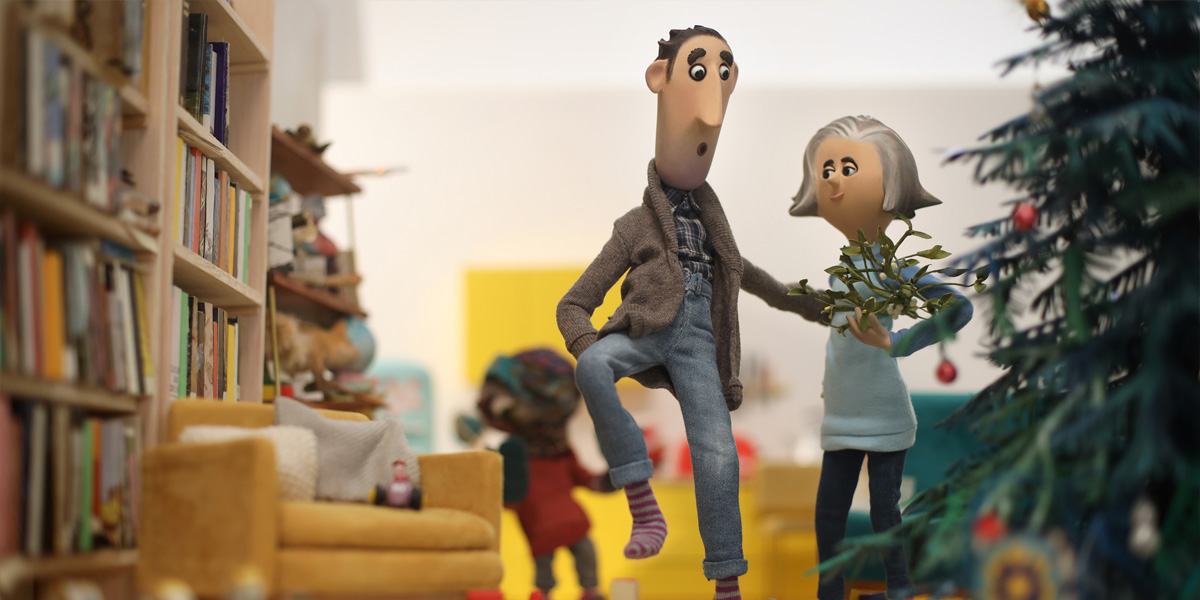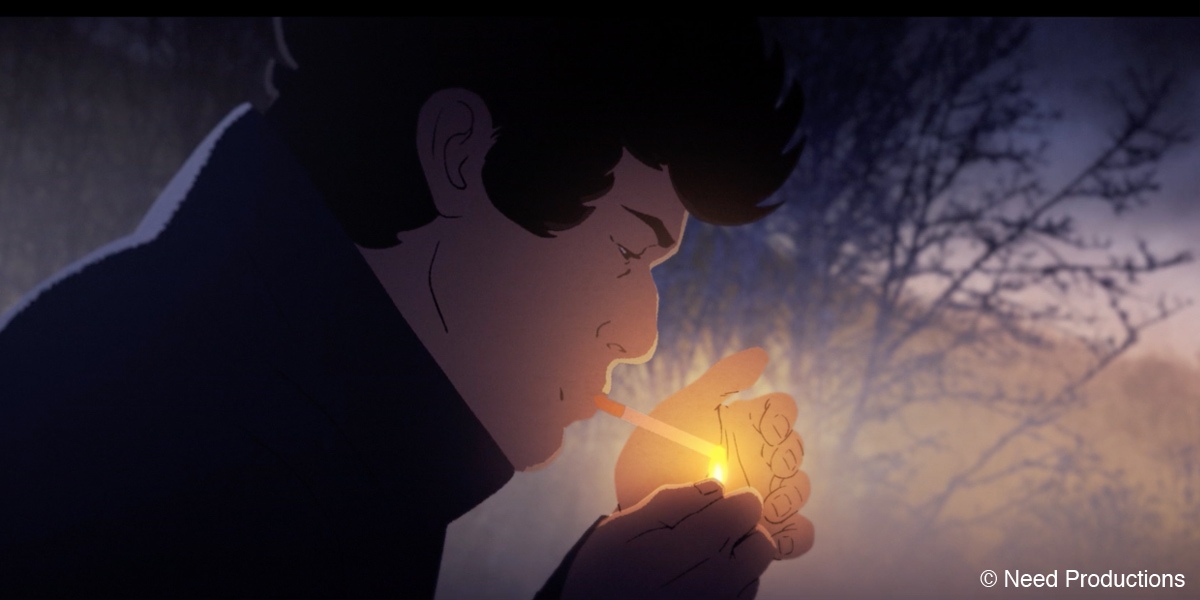Sidi Kaba and the Gateway Home
(Status: In Development)

Synopsis
With the help of the goddess Mami Wata, Sidi Kaba, an 8‑year-old boy, tries to find his brother who has been taken prisoner by slave traders. A fantastic epic that delivers us along the road of slavery.
Sidi Kaba and the Gateway Home
Director: Rony Hotin
Authors: Rony Hotin and Jérôme Piot
Scriptwriters: Rony Hotin and Jérôme Piot
Producer: Sébastien Onomo (Special Touch Studios, France)
Target Audience: Family
Technique: 2D digital, 3D digital
Format: 90’
Sidi Kaba and the Gateway Home is an elegantly-animated 2D animated feature film project targeting a family audience. The film will not only present an engaging adventure, but also, thanks to the power of animation, immerse the audience in a story inspired by the true history of the Maroons that tells us a very important thing we should learn and consider.
We heard the insightful story behind the film project from Rony Hotin, the director and creator of the film, and Sébastien Onomo, the producer.
Interview with Rony Hotin and Sébastien Onomo
Hideki Nagaishi (HN): Could you let us know the outline of the film’s story and the key points that you would like to appeal to the prospective global audience?
Rony Hotin: Sidi Kaba and the Gateway Home will follow an African kid struggling to free his older brother from slavery. As we wish to reach a family audience, we’ll tell the story from the angle of a fantastic and adventurous tale. During his journey, Sidi will cross the ocean with the help of a forgotten goddess, reach a plantation on a Sugar Island where his brother’s kept prisoner and join the famous Maroon resistance.
By directing this feature film with unifying and universal values, I would like to offer to a new generation of children an opportunity to watch our common History in face despite its harshness and highlight the endless resistance of millions of captives who never stopped to fight until they get back their freedom for them and for anyone else in the world. This is our powerful legacy and I hope families will get sensitive to it.
HN: How did the film project start?
Sébastien Onomo: The project started in 2015, when I was producing a TV documentary film Ebony (2016) directed by Moussa Touré. It was a movie about slavery, but for an adult target. And I was a bit disappointed by the fact that I couldn’t show this movie to my children for many years. I was frustrated by this lack of content to tell this history to a young audience. And during this period I met Rony and Jérôme. They presented me the project and I fell in love with the unique and singular approach of Sidi Kaba and the Gateway Home.
HN: What part of the film’s story and what part of Ron’s talents were the keys to make you decide producing this film project?
Sébastien Onomo: Rony is a complete talent with a strong artistic vision. That was the key element for me to make me decide to producing this film, because I know in this end, we will have a great film that could touch a large audience.
HN: Where did the initial idea of the story and characters come from?
Rony Hotin: Since 2006, France has been commemorating the slave trade as an event in its history, but my co-writer Jérôme Piot and I have noticed there were only a few French fiction films on the subject. Sidi Kaba and the Gateway Home is intended to fill this gap with an imaginary narrative, without judgment or moralizing. We hope that each spectator will appropriate, through animation, this sensitive period, common to Africa, France, its departments and overseas territories, integrated into the framework of European and Western colonial expansion.
A few of the characters were directly inspired by archetypal figures of the tale genre. Others make reference to historical figures like the maroon Solitude and the major Louis Delgrès. And the rest of them are personal projections helping me to reconnect with my distant ancestors. As an afro-caribbean, I didn’t grow up with the knowledge of their history. So, developing my characters was also like offering a second life to my unknown ancestors.
HN: What do you take care in the most when you write the script with Jérôme Piot?
Rony Hotin: Since the start, we’ve wanted to tell the story through the point of view of a child to ensure a maximum of depth and emotion, but also to show the way that Sidi looks at the world without any judgment and propose a narrative universe that transcends the historical dimension of slavery.
One of our first wishes was also seeing Sidi Kaba and the Gateway Home becoming an additional educative support for children so we’ve irrigated our imagination with references to reality: The Gateway Home (evokes The House of Slaves and its Door of No Return on Gorée Island, Sénégal) The Land of 1000 Kingdoms (evokes West Africa); The Kingdoms of the Old World (Europe); The Plantations of the New World and the Sugar Island (the West Indies and the Caribbean); The Middle Passage (the Atlantic Ocean), etc.
HN: Could you let us know the most important characteristic and goal of the visual design of characters and the universe of the story?
Rony Hotin: First, I am convinced that animation is the best way to highlight a tragic event in the history of humanity, while proposing a fair distance of things in the manner of a Persepolis by Marjane Satrapi. The style of the animation drawings in Sidi Kaba and the Gateway Home will be mainly curved and sweet. Then, to carry on contrasting with the harshness of the subject on which the story is based, I want to draw inspiration from the Impressionist pictorial movement, where sensitivity and feeling predominate, to develop an artistic direction that is as bright and colorful as possible and give to the young audience a strong pictorial experience as I was impressed by the first impressionist pictures I’ve seen when I was a child.
HN: Could you let us know the story behind the music in the trailer, which was played at Cartoon Movie 2022, and your plan on the music for the feature film?
Rony Hotin: The film, having a strong historical anchor, will also be felt musically. In the pilot, there are two leitmotivs: one for the forgotten Goddess Mami Wata, and one for the Maroons. Alongside composer Thibaut Kientz Agyeman, who’ve composed the music in the pilot, we will develop another catchy leitmotiv specific to Sidi that will accompany our hero in his quest and will counterbalance the melancholic music associated with our forgotten Goddess crying her curse and those of the lost souls.
In addition, we’ll make sure to keep mixing African, West Indian and European sonorities to link the continents together and to echo the universal values that drive me to make this film.



